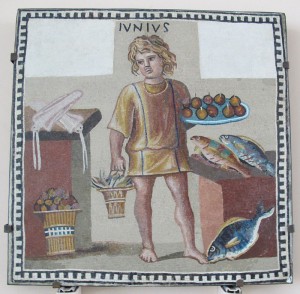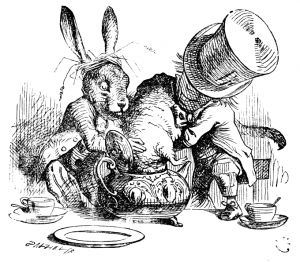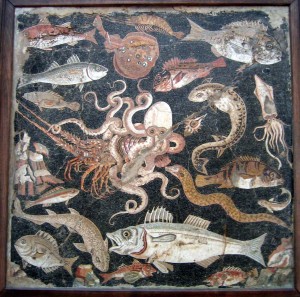Ancient Roman Recipes Posted by Brittany Britanniae on Sep 10, 2014 in Latin Language, Roman culture
Salvete Omnes,
I hope everyone is doing great today! I will be honest and admit that this post is coming to fruition a bit later than I have liked. Yesterday was my birthday and I came home to a surprise party! It was very surprising to the say the least and a wonderful gesture. But as I sat there eating my surprise dinner, I wondered about the article that I would be writing for this week’s theme: Recipes.
I further wondered what use would a Latin or Ancient Roman Recipe be to my readers. So I have come up with two ideas. The first, I don’t know how many of you who read this throw your friends or family dinner parties, but instead of the same old boring food-why not theme it? Roman Dinner Party? Ask people to dress up toga (accurate or inaccurate) and serve only the most authentic food that will give your family and friends a taste of a different world and time! The second idea piggybacks off the first with a Roman Halloween Party! We also have a lovely post on Roman Halloween Costume Ideas here.
ROMAN DINNER PARTY
For this theme, I was asked to provide one recipe with the Latin and then the English, which is what you will see below. Although the recipe I have chosen is one of rarity is probably never cooked anymore; I hope it will lend some insight into the Roman and their food choices. Lastly, I have provided at the end of this article more options for recipes (that are not odd, rare, or obscure) for your trying.

A boy holding a platter of fruits and what may be a bucket of crabs, in a kitchen with fish and squid, on the June panel from a mosaic depicting the months (3rd century. Courtesy of WikiCommons & Sailko.
The Recipe that I would love to translate and discuss today is the most intriguing in my mind: the dormouse. Most commonly known from its appearance in Lewis Carroll’s Alice in Wonderland’ s Tea Party.

The March Hare and the Hatter put the Dormouse’s head in a teapot. Illustration by John Tenniel.. Courtesy of WikiCommons and JasonAQuest.
It is often referred to as the edible dormouse, which was farmed by the Romans (which is discussed and explained here). It was mainly eaten as part of a snack,part of a main course, or even as a dessert. The text for this recipe (stuffed dormouse) is found in Apicius’ De Re Coquinaria Book 8 Chapater 9 (here):
Glires: “isicio porcino, item pulpis ex omni membro glirium trito, cum pipere, nucleis, lasere, liquamine farcies glires, et sutos in tegula positos mittes in furnum aut farsos in clibano coques.”
Dormice: “Stuff the mice with minced pork, likewise with mouse meat from all (fleshy) parts of the mouse ground with pepper, pine kernels, laser, and garum (or broth). Sew the mouse up and put on a tile on the stove. Or roast in a portable oven.”
It should be noted that Roman recipes by Apicius ( the only “complete” recipe book that has survived) does not include measurements, ingredients, or even a cook time.
For a Modern interpretation of the dormouse recipe (a.k.a the substitution of dormouse with chicken) , please check out this wonderful recipe: here.
The topic of food and recipes have been discussed in this blog before, please take a look at some of our previous post that discuss terminology, popular food, (here) and even have some helpful videos(here)!
For more of a collection of recipes in Latin and English, please see this wonderful website: Eight Recipes from Around the Roman Table-Food and Feasting in Ancient Rome (here). More Roman Recipes can also be found here.

Build vocabulary, practice pronunciation, and more with Transparent Language Online. Available anytime, anywhere, on any device.
About the Author: Brittany Britanniae
Hello There! Please feel free to ask me anything about Latin Grammar, Syntax, or the Ancient World.





